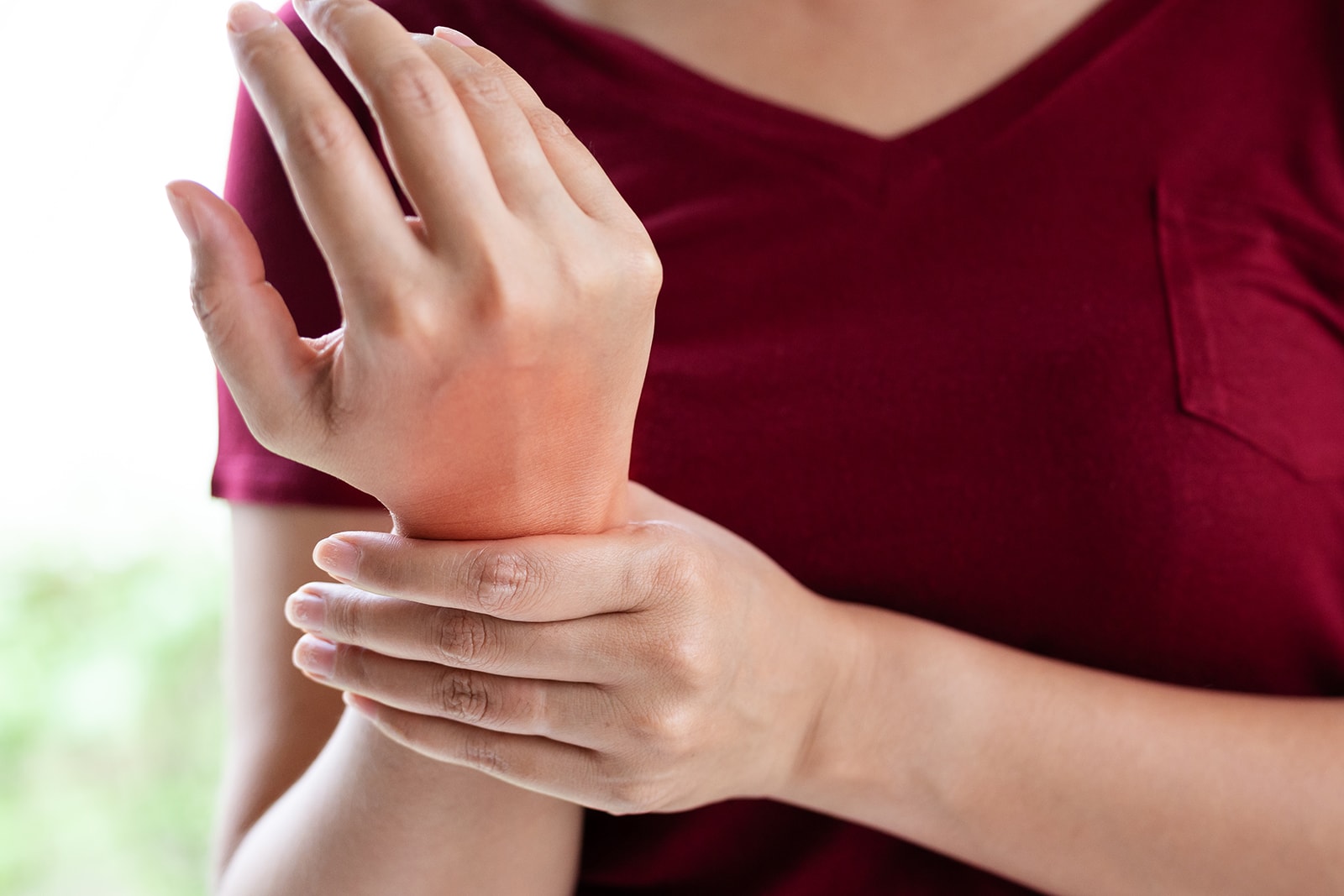
There are dozens of different types of physical therapy treatments utilized at PRO~PT for various conditions. Learn more about the types of treatments offered at our offices below.
Active Assistive Range of Motion (AAROM) – Therapist-assisted active range of motion. This is usually prescribed for gentle stretching or strengthening for a very weak body part.
Active Range of Motion (AROM) – The patient lifts or moves a body part through range of motion against gravity. AROM is usually one of the first modalities prescribed for arthritis.
Cryotherapy or Cold Therapy – Used to cause vasoconstriction (the blood vessels constrict or decrease their diameter) to reduce the amount of fluid that leaks out of the capillaries into the tissue spaces (swelling) in response to injury of tissue. Ice or cold is used most frequently in acute injuries, but also an effective pain reliever for even the most chronic pain.
Gait or Walking Training – The analysis of walking problems by visually examining the interaction of the low back and the joints of the thighs, legs, and feet during the various stages of walking, including initial contact, loading response, mid stance, terminal stance, pre swing, mid swing, and terminal swing. Many back, thigh, leg, ankle, and foot problems may be caused by or manifest themselves in subtle gait abnormalities.
Heat – Heat is recommended to decrease chronic pain, relax muscles, and relieve pain. It should not be used with an acute or “new” injury.
Iontophoresis – Medications are propelled through the skin by an electrical charge. This modality works on the physical concept that like charges repel each other—therefore, a positively charged medication will be repelled through the skin to the underlying tissues by the positively charged pad of an iontophoresis machine. Iontophoresis is usually prescribed for injuries such as shoulder bursitis or elbow bursitis.
Isometrics – Muscle contraction without joint movement. This is usually prescribed for strengthening without stressing or damaging the joint (e.g., arthritis, or exercises to be performed in a cast, or right after surgery if recommended by the therapist/doctor).
Isotonics – Muscle(s) contracting through the ROM with resistance. This is usually prescribed for strengthening.
Mobilization – Hands-on therapeutic procedures intended to increase soft tissue or joint mobility. Mobilization is usually prescribed to increase mobility, delay progressive stiffness, and relieve pain. There are many types of mobilization techniques, including Maitland, Kaltenborn, and Isometric Mobilizations.
Neck Traction – A gentle longitudinal/axial pull on the neck, either manual or mechanical, intermittent or continuous for relief of neck pain, to decrease muscle spasm and facilitate unloading of the spine.
Neuromuscular Electrical Stimulation (NMES) – The application of electrical stimulation to aid in improving strength (e.g., the quadriceps muscle after knee surgery or injury). NMES is also used to decrease pain and swelling and to relieve muscle spasm.
Passive Range of Motion (PROM) – The patient or therapist moves the body part through a range of motion without the use of the muscles that “actively” move the joint(s).
Pelvic Traction – The longitudinal/axial pull on the lumbar spine, either manual or mechanical, intermittent or continuous. Pelvic traction may be helpful for the relief of low back pain and muscle spasm.
Posture Training – Instruction in the correct biomechanical alignment of the body to reduce undue strain on muscles, joints, ligaments, discs, and other soft tissues. There is an ideal posture, but most people do not have ideal posture. Therapists educate patients about the importance of improving posture with daily activities. Stretching and strengthening exercises may be prescribed to facilitate postural improvement and to prevent further disability and future recurrences of problems.
Progressive Resistive Exercises (PRE) – Exercises that gradually increase in resistance (weights) and repetitions. PRE is usually prescribed for reeducation of muscles and strengthening. Weights, rubber bands, and body weight can be used as resistance.
Proprioceptive Neuromuscular Facilitation (PNF) – A system of manually resisted exercises performed in diagonal patterns that mimic functional movements. PNF was initially used in developmentally and neurologically impaired patients, but now is used in almost every aspect of neuromuscular retraining, from athletes in sports facilities to the very weak in hospitals and nursing homes.
Soft Tissue Mobilization – Therapeutic massage of body tissue performed with the hands. Soft tissue mobilization may be used for muscle relaxation, to decrease swelling, to decrease scar tissue adhesions, and for pain relief.
Stationary Bicycle – With or without resistance. This is usually prescribed for improving the strength and/or range of motion of the back or lower extremities, as well as cardiovascular endurance.
Stretching/Flexibility Exercise – Exercise designed to lengthen muscle(s) or soft tissue. Stretching exercises are usually prescribed to improve the flexibility of muscles that have tightened due to disuse or in compensation to pain, spasm, or immobilization.
Transcutaneous Electrical Nerve Stimulation (TENS) – A relatively low voltage applied over painful areas through small self-adhesive electrodes. The electrical stimulation “disguises” or “overrides” the sensation of pain. It is a small, portable unit used in intervals to control pain and reduce dependence on drugs. It is usually prescribed for relief of pain.
Ultrasound – Ultrasound uses a high-frequency sound wave emitted from the sound head when electricity is passed through a quartz crystal. The sound waves cause the vibration of water molecules deep within tissue, causing a heating effect. When the sound waves are pulsed, they cause a vibration of the tissue rather than heating. The stream of sound waves helps with nutrition exchange at the cellular level and healing. Studies have shown that ultrasound is helpful for ligament healing and, clinically, for carpal tunnel syndrome and muscle spasm.
Whirlpool – Immersion of a body part into water with small “agitators” to provide a gentle massaging motion. A warm whirlpool provides relief from pain and muscle spasm and is often preparatory to stretching or exercise. Cold whirlpool is used to decrease inflammation and swelling.







